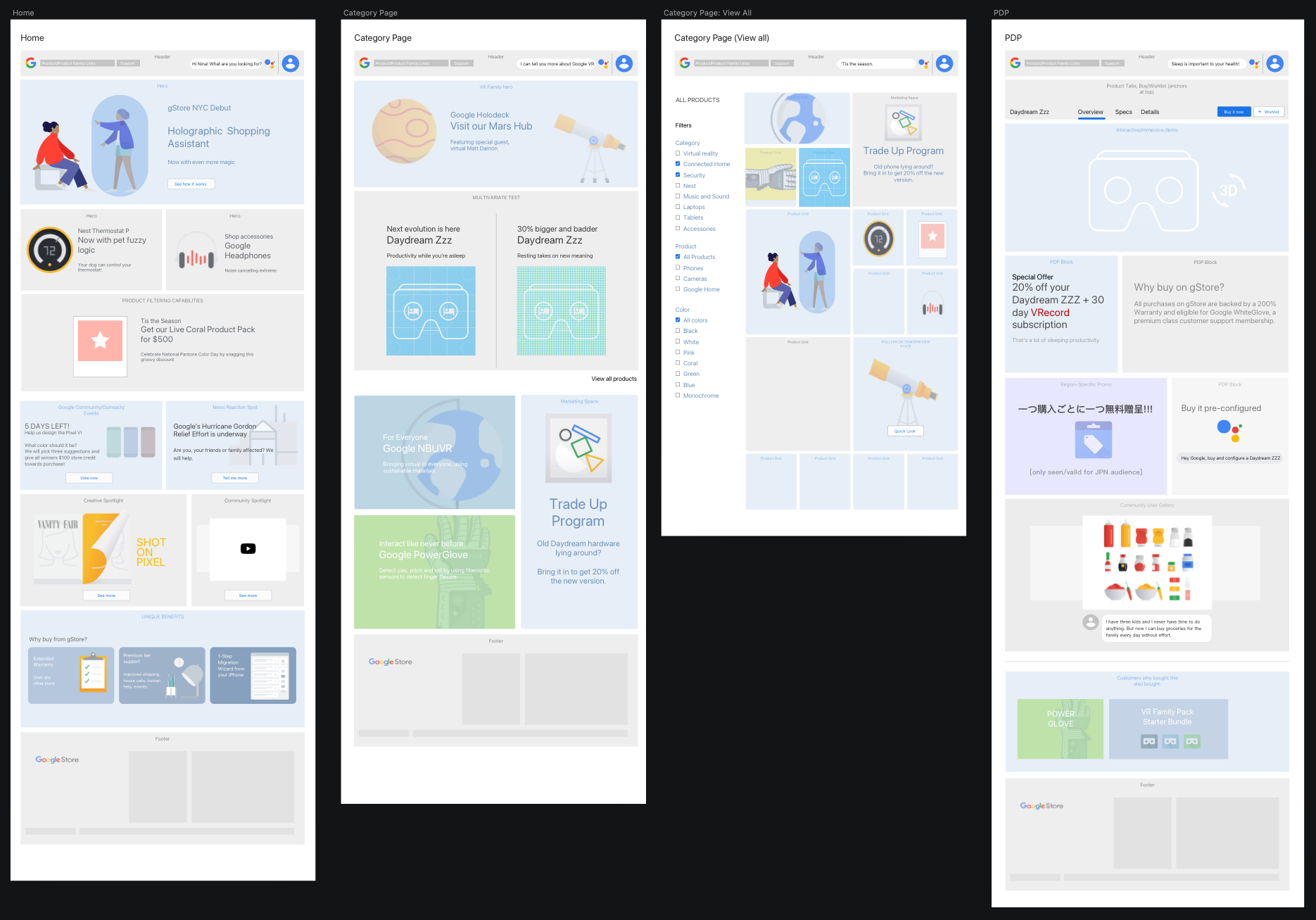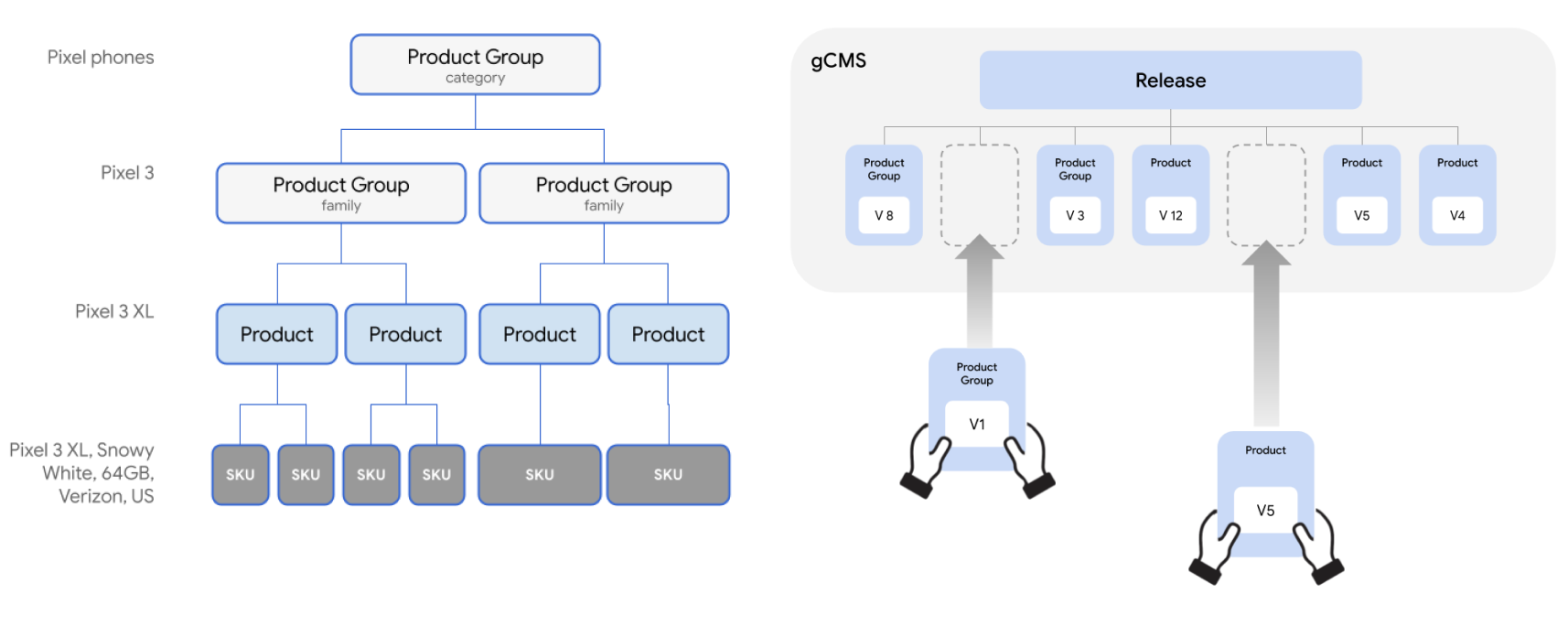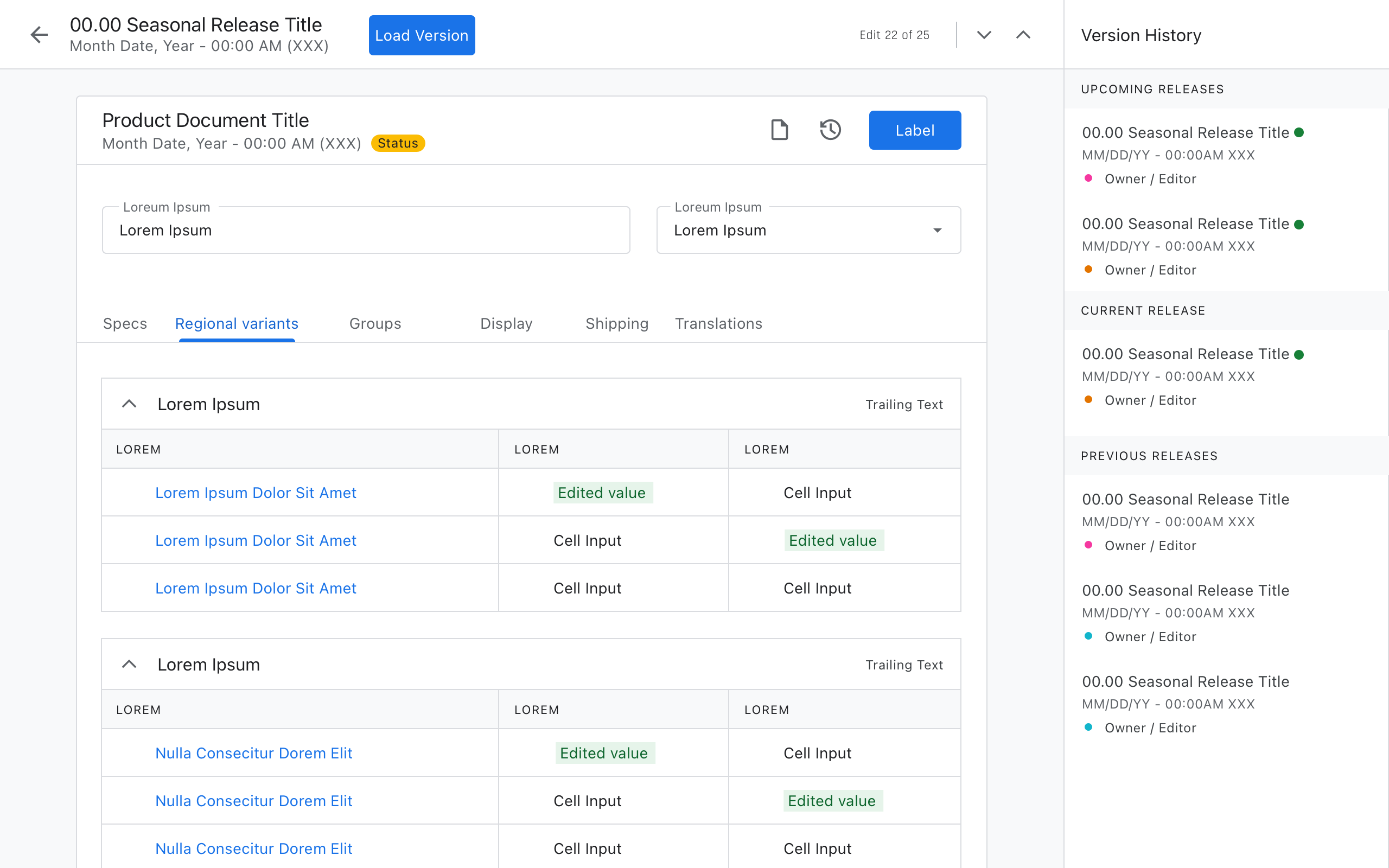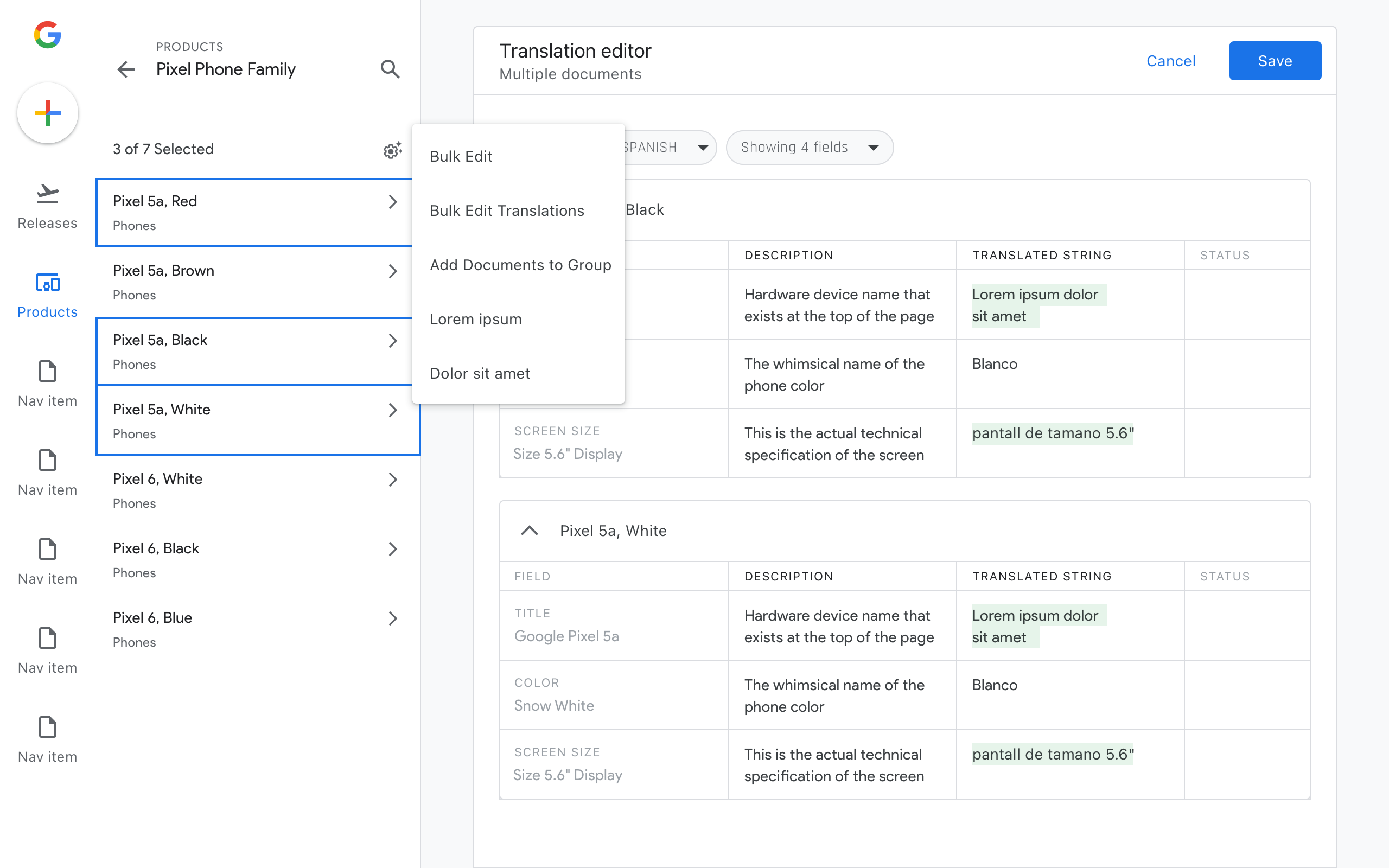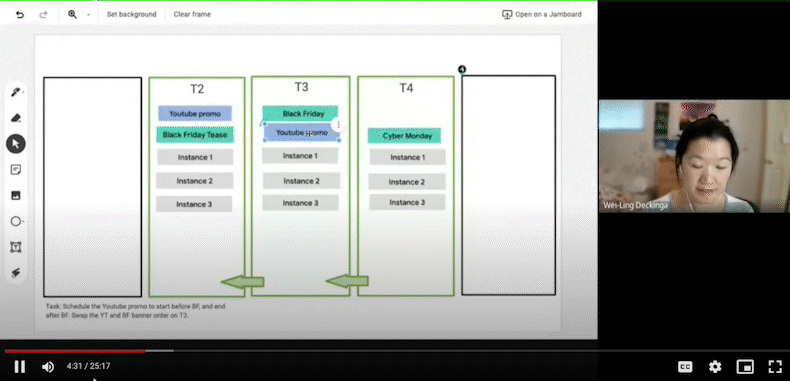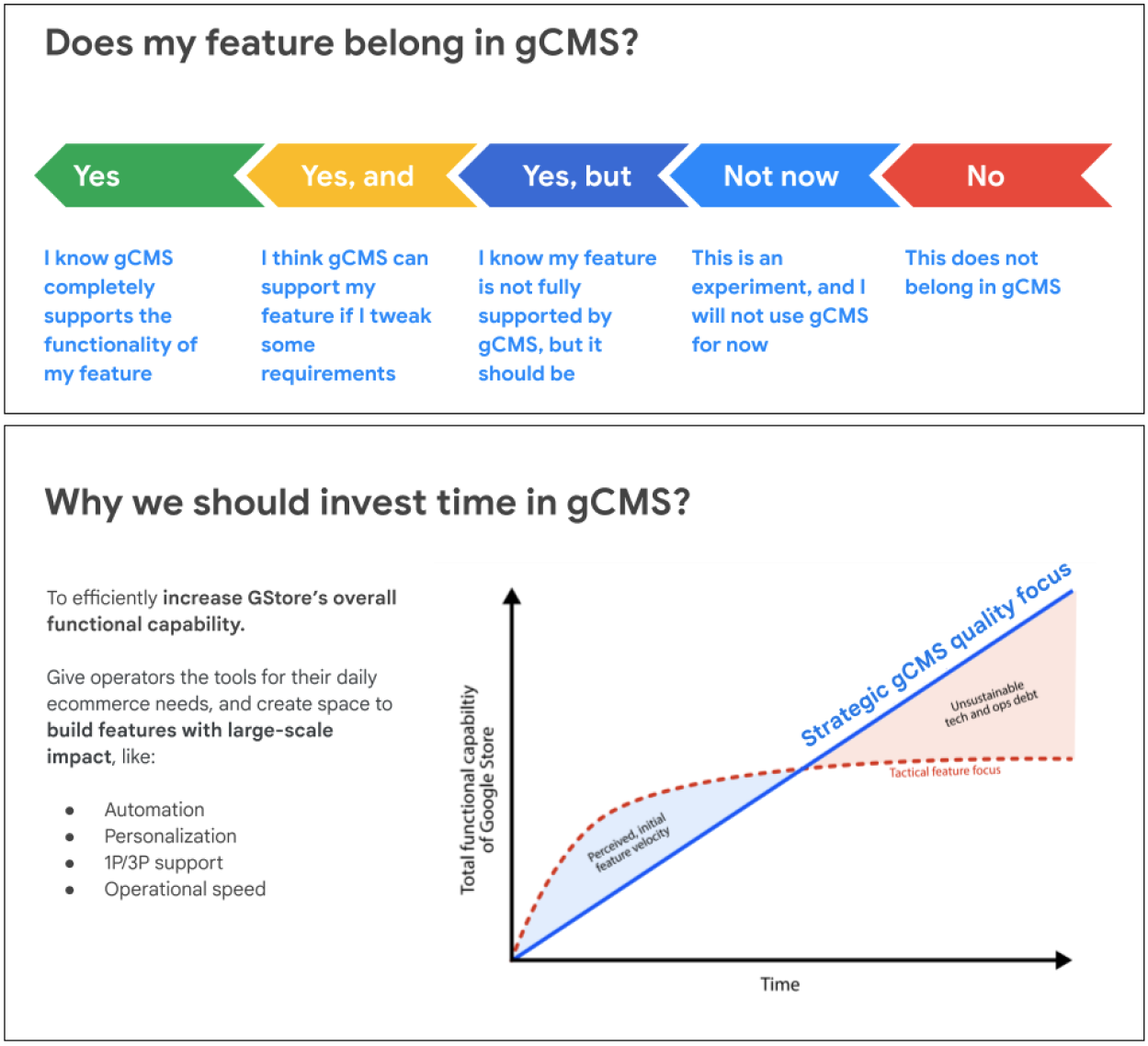I led UX design for GCMS, the next-gen content management system powering Google’s OEM e-commerce platform. Built from the ground up, it became the single source of truth for Google Store's product catalog, merchandising, and site promotions.
INTRODUCTION
I designed GCMS’s scalable framework to support Google’s expanding hardware and service catalog—including Pixel, Nest, Chromecast, Fitbit, and more. To ensure operational success, I built comprehensive training resources for global ops leads, product partners, and executive stakeholders.
I developed tools to track platform efficiency and satisfaction, and established a structured feature intake process to guide GCMS’s long-term growth and NPS.
I also led critical workflow improvements that reduced catastrophic site leaks from multiple incidents per year to zero. For this work, I received Google Store’s first-ever Ownership Award and earned a “superb” performance rating—the highest at Google.
Please note: to comply with my confidentiality agreement, I am presenting re-drawn visual representations, and have omitted key information.
MY ROLE
| Design Lead Supporting 40+ engineers and 2 PMs across two countries. Peer-led a UX team of 3. Post-launch, reduced operational expenses by executing a smooth UX handoff to a cross-functional team in Bangalore. |
THE PROBLEM
Google Store had outgrown its legacy CMS, which relied on manual, repetitive work and a large contractor team. The system’s complexity led to data errors, stress-related attrition, and frequent leaks—most notably in 2021, when images of the Pixel 4a were accidentally published early and distributed worldwide by 9to5Google and Android Police.
BRAINSTORMING THE FUTURE
During brainstorming, we identified two key user groups and brought them into North Star brainstorm activities.
- For direct users (the ops team), we ran a design thinking workshop where small groups sketched metaphors for an ideal next-gen CMS. Their insights directly informed the catalog design.
- For indirect users (our marketing partners), I gathered input on the types of pages GCMS needed to support. I created a mid-fidelity mock of a futuristic GStore site to align on vision. Their feedback shaped the merchandising experience.
FOUNDATIONAL PROPOSAL
Research consistently revealed that the ops team needed more granular data control and better change visibility. Inspired by tools like SVN and GitHub. I proposed a CMS framework modeled on source control principles. The new system:
- Broke down page-level saves to field-level saves
- Introduced a structured, attribute-driven product catalog hierarchy
- Routed all data through a release checkpoint and approval process
- The “source-controlled CMS” concept gained strong executive support and was approved for implementation.
3 KEY CMS FEATURES
1. Release management system
I partnered with internal teams to co-design a status taxonomy using color and clear workflow descriptions, enabling GCMS to visually communicate release states. The system centralizes coordination and gives operators precise control over what’s released and when.
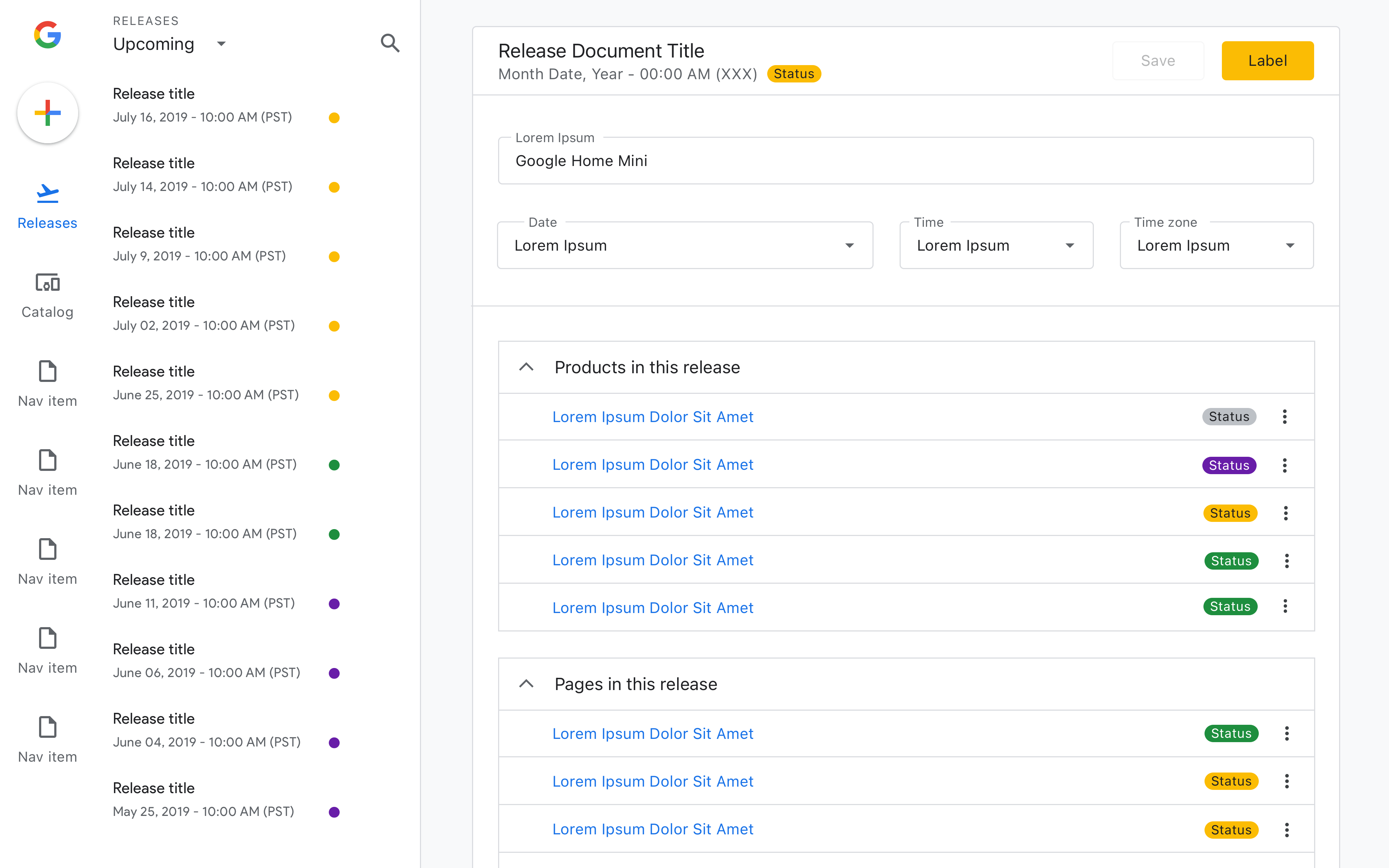
BUILDING A STRUCTURED, ATTRIBUTE-DRIVEN CATALOG
GStore’s catalog featured products with complex attribute variations—like the Pixel 4a, which required 64 SKUs to cover colors, sizes, and carriers. Operators previously managed this by hand, resulting in frequent, costly errors.
To fix this, we launched two key features:
- Product Wizard: Operators selected attributes, and the system auto-generated all permutations—eliminating 64 manual entries and streamlining catalog creation.
- Bulk Edit (pictured below): To mitigate volatile product details changing right before launch (e.g. phone colors added, storage capacities changed), I built a dynamic UI that let operators edit attributes across SKUs at scale. Updating 48 variations from “Fire-Red” to “Marvelously Maroon” now took seconds instead of hours.
LANDING THE LAUNCH: FEATURE EDUCATION
Even the best system fails without user buy-in, so even as we prepared to launch GCMS, I began to focus on de-risking adoption. I pitched - and was granted headcount - to implement “Teach the Teacher,” an operator training program featuring video demos of critical user journeys in a live staging environment. This empowered global ops leads to confidently train their teams and built enthusiasm during a major transition.
ESTABLISHING TRAINING AND HEALTH METRICS
To prepare for GCMS launch, I led a series of org-wide roadshows—deep dives for PMs and high-level overviews for execs. I created a “GCMS 101” deck that served as both onboarding guide and ops manual. It circulated widely and remained in use long after launch, with view requests still coming in a year later.
To track platform health, I partnered with UX Research to launch a bi-annual baseline study. Operators completed key workflows while we measured time on task, success, and satisfaction. When early results revealed lower-than-expected success, I used the data to push for critical MVP+ improvements—especially important as engineering transitioned to Bangalore and focus shifted toward net-new work. The study helped spotlight essential refinements operators still needed to succeed.
RESULTS AND RECOGNITION
By the end of the project, I was supporting 40+ engineers, 2 PMs across two countries, and peer-leading a UX team of 3. After launch, I executed a smooth UX handoff to our Bangalore team, reducing operational costs and ensuring continuity.
The new release system replaced manual spreadsheets—a major source of site leaks—and helped drive leaks from multiple per year to zero post-migration.
I codified my GCMS design work into a custom design system: built on Google Material 2 but tailored for dense, enterprise-grade IA. This pattern library still guides GCMS contributors today.
In Q3 2021, Google Store leadership introduced the quarterly “GStore Ownership” Award to honor exceptional achievements. I was the very first design recipient, recognized as a key leader behind GCMS’s success.
Finally - to share lessons from this work, I created and delivered a 45-minute talk called Yes to UX, focused on cross-functional alignment: how to get partners to say “yes,” and how to regroup when they don’t. To date, I’ve presented it to 200+ UX designers across Google.
